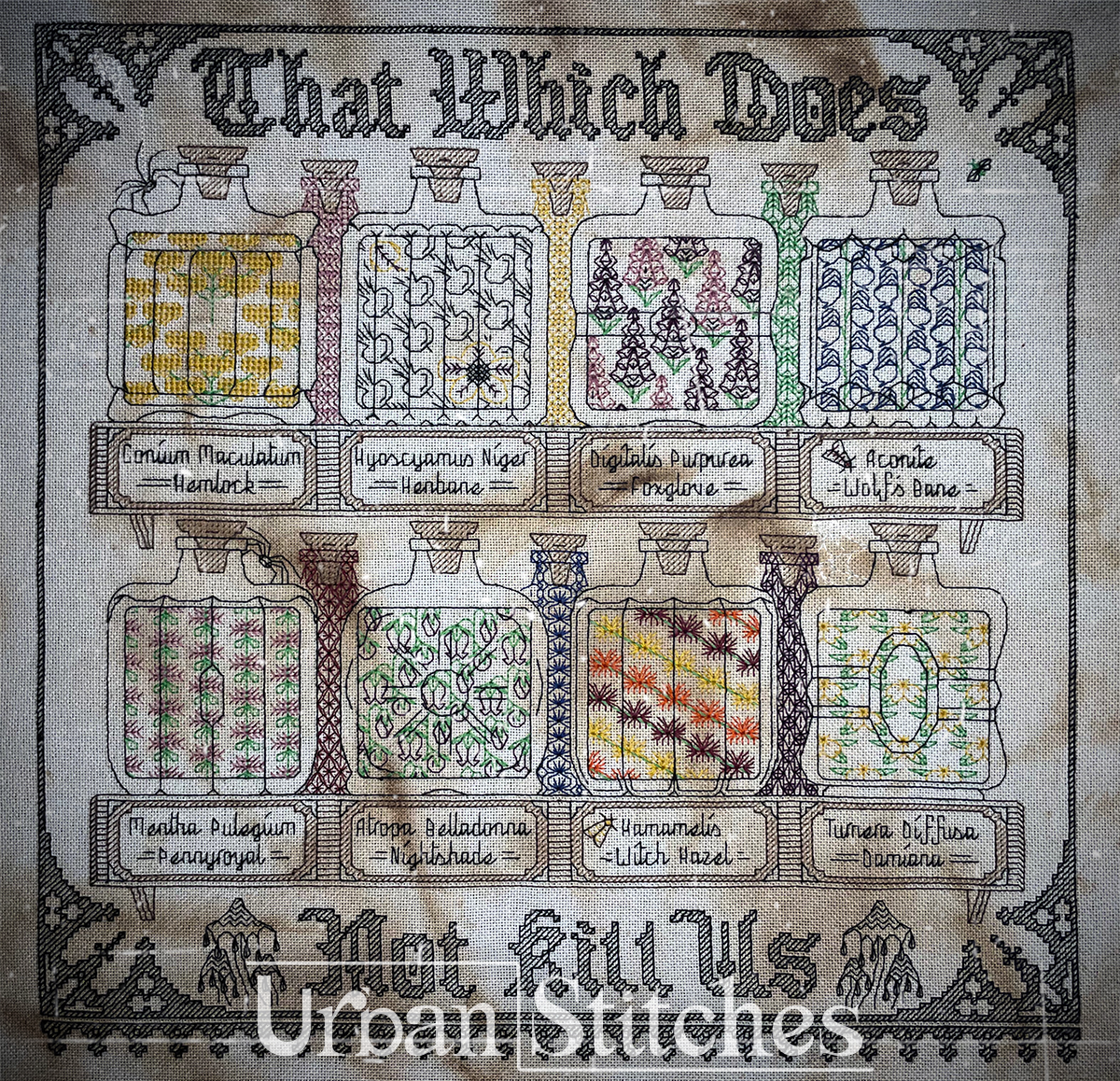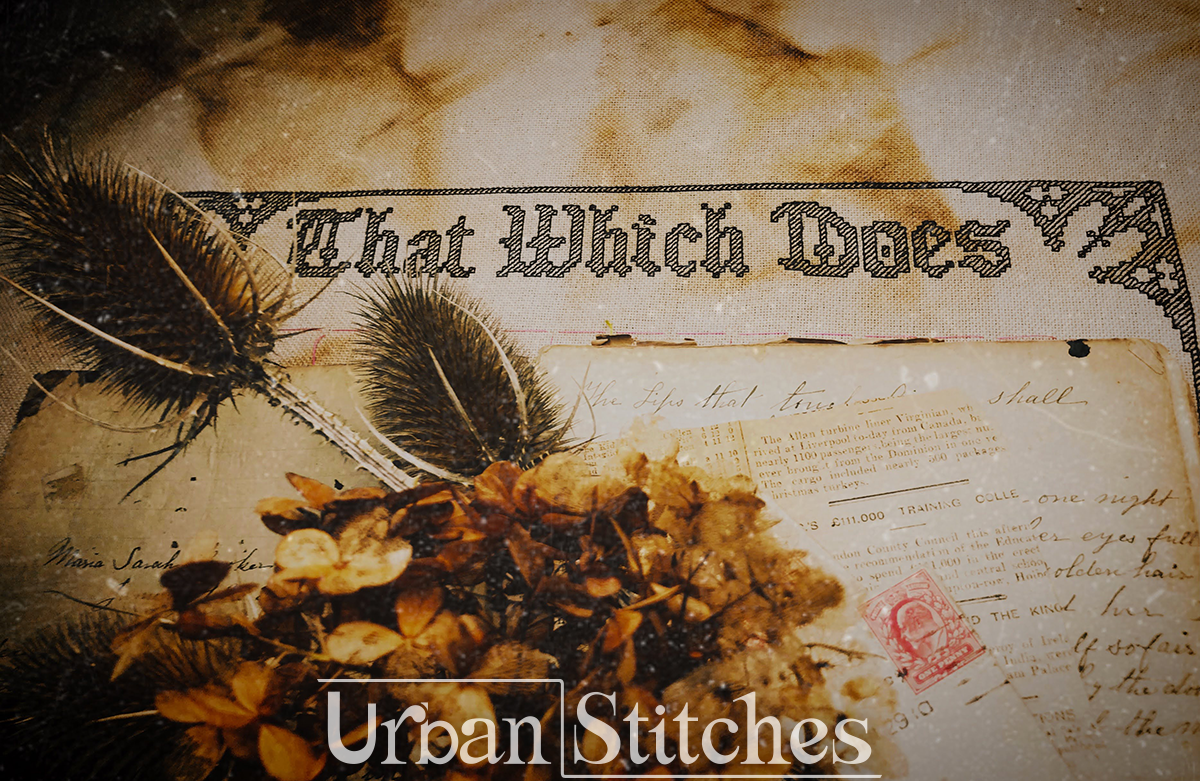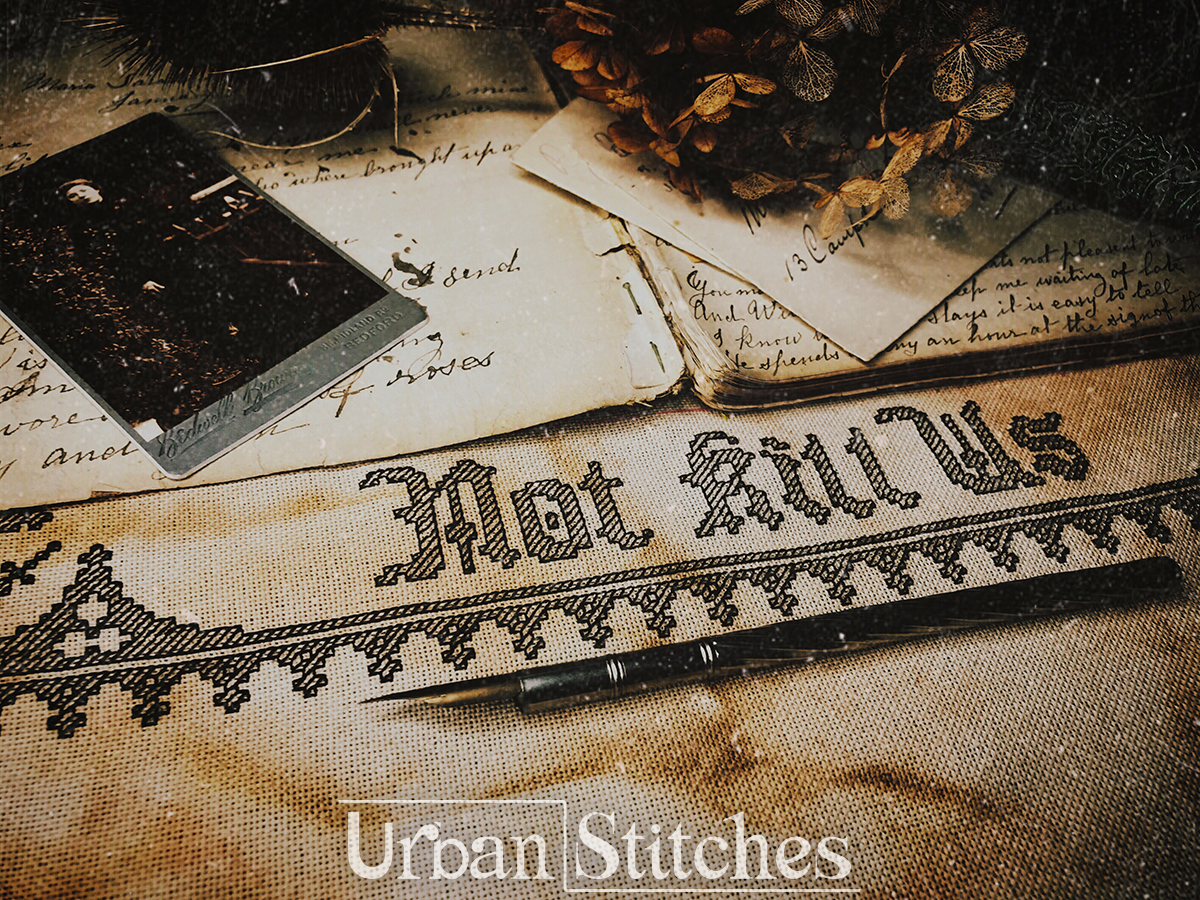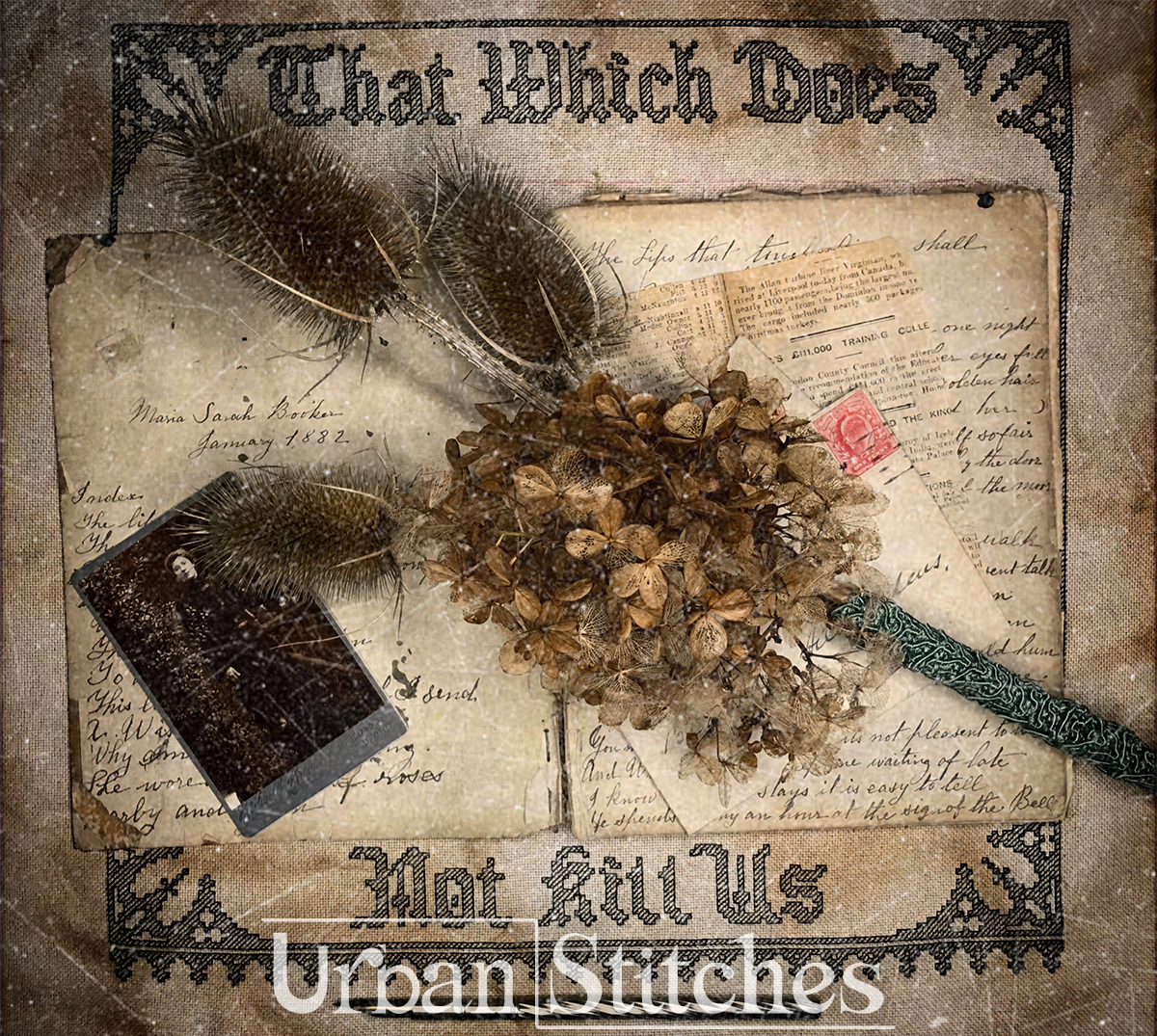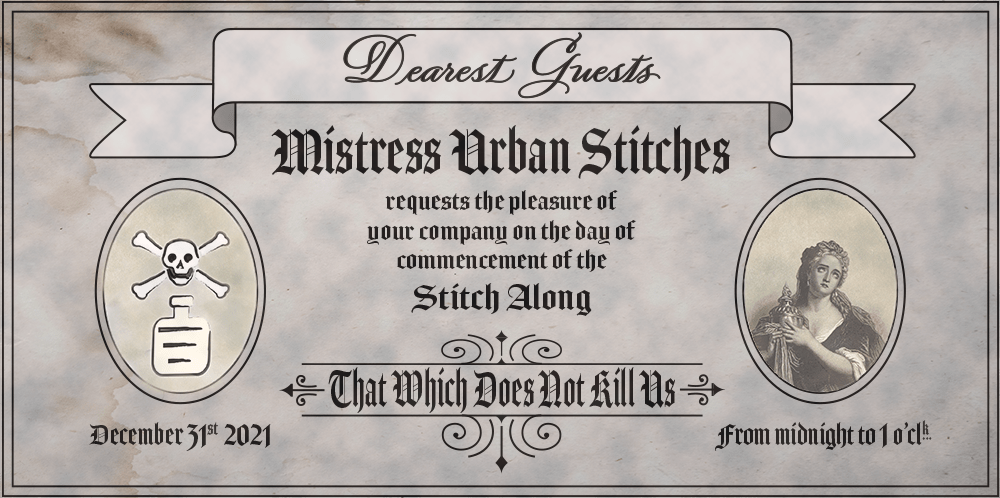That Which Does Not Kill Us - Urban Stitches (stitch along) SAL - blackwork embroidery toxic plants Victorian gothic
That Which Does Not Kill Us - Urban Stitches (stitch along) SAL - blackwork embroidery toxic plants Victorian gothic
Couldn't load pickup availability
Victorian gothic blackwork embroidery stitch along pattern. Toxic medicinal plants
Once, upon a morn so dreary, I (your kindest of hosts - Mistress Stitches) stumbled upon a book hidden on my bookshelf that I do not recall having ever seen before. From whence it came, I still remain unsure. A small book, unmarked on it's cover, all hand written with papers lose and a cabinet photograph enclosed of someone unfamiliar.
Intrigued, I retired to my chair in the parlour to read with growing interest. A most curious volume indeed.
I pulled close my writing slope and started to note down the key jewels of information held therein. As if a child, my eyes lit with wonder! All of the marvels of the medicinal properties of plants that grow hither and thither in garden and hedgerow were laid bare to me. Oh! My wonderment increased ten fold with each notation. Yet the book held a stark warning. If these botanical wonders were not handled in the proper manor, the blessings bestowed could turn to curse and poison the unwary.
So, I welcome you to peruse, although carefully, the wonderous tinctures which lay upon my shelves that have helped to heal the sick and the wounded. These botanicals have become a steadfast part of our miraculous modern medicine. But beware, handle with care and follow all guidance given for there is a fine line between imbuing life and imbibing death.
Without further ado, please be welcome my Honoured Guests, and remember to remain wary of what you touch in my parlour. Sometimes the prettiest things can cause the most pain...
This is a mystery SAL, you don't get to see the full pattern until the end. The design is based around the traditional sampler and has a Victorian gothic in feel to it. Each of the sampler sections is decorated differently.
On pattern release, be sure to stick to the pattern in the PDF. You may feel the urge to "fill in the blanks", but the spaces are there for specific reasons!
There are 3 palettes available to stitch this pattern in, "jewel" tones, more "muted" colours and a "dark" palette. This pattern is designed to be stitched on lighter coloured fabrics. I have stitched mine on 28 count coffee dyed evenweave stitching over 2. I have stitched the frame in black, you can change this to a colour of your preference.
There are some fractional stitches in this pattern.
■ Sizing ■
Pattern size: 180 wide x 180 high
Following sizes are for:
14 count (or stitching over 2 on 28 count) - stitched area: 32.7cm x 32.7cm (12 ¾ x 12 ¾ inches); fabric size suggested: 48cm x 48cm (19 x 19 inches)
16 count (or stitching over 2 on 32 count) - stitched area: 28.6cm x 28.6cm (11 ¼ x 11 ¼ inches); fabric size suggested: 44cm x 44cm (17 x 17 inches)
18 count (or stitching over 2 on 36 count) - stitched area: 25.4cm x 25.4cm (10 x 10 inches); fabric size suggested: 41cm x 41cm (16 x 16 inches)
■ Colours ■
Muted: DMC Ecru/white, 310, 420, 422, 156, 210, 604, 722, 743, 954 & 3801
Jewel: DMC Ecru/white, 310, 420, 422, 155, 444, 553, 666, 894, 912 & 970
Dark: DMC Ecru/white, 154, 310, 336, 702, 838, 900, 902, 3726, 3852 & 3862
■ Pattern Content ■
Floss brands: DMC
Colour count: 11
Backstitching: YES
Fractional stitches : YES
French/colonial knots: NO
Metallic floss: NO
Other speciality floss: NO
Blends: NO
★ This has been fully released
🖤 Follow me on IG @theurbanstitches 🖤
© Urban Stitches 2022
Share
Learn to stitch
Learn to stitch
Video Stitching tutorials
- Basic Equipment
- How to unwind a skein
- Choosing your floss length
- Pin stitch, back stitch, Holbein stitch and fractional stitches in blackwork
Written tutorials with diagrams
- Converting Fabric Sizes Between Different Counts
- How To Read A Pattern
- Gridding
- Separating A Strand Of Floss
- Back Stitch – Aida
- Back Stitch – Evenweave/linen/stitching “over 2”
- Holbein Stitch (Double Running Stitch)
- Pin Stitch (no knot start/end) – Aida
- Pin Stitch (no knot start/end) – Evenweave/linen
- Loop Start (even umber of floss strands)
- Loop Start (odd number of floss strands)
- Waste Knot
- Needle Sizes
- Dealing With Fractional Stitches
